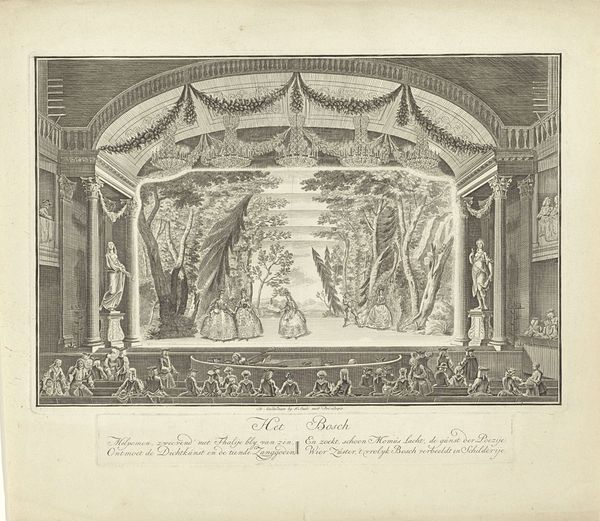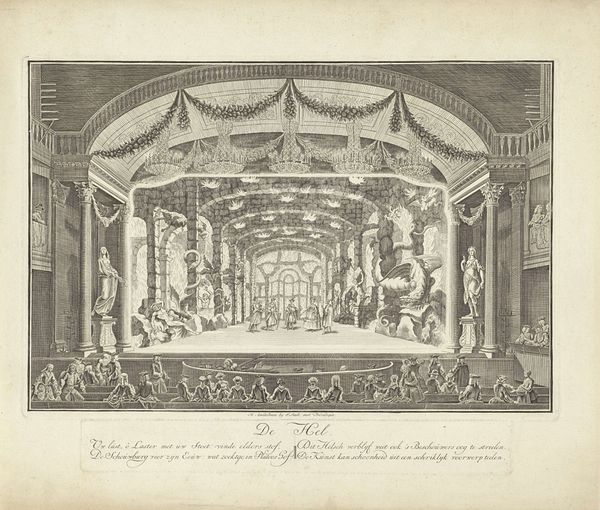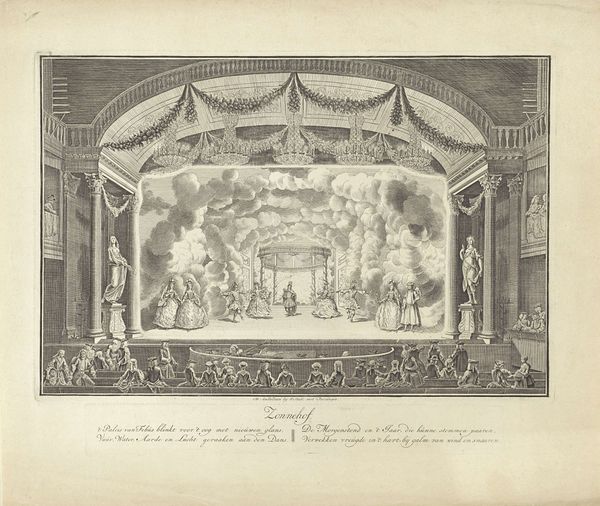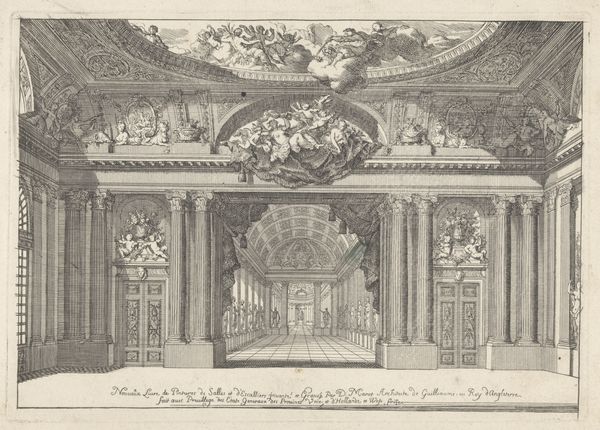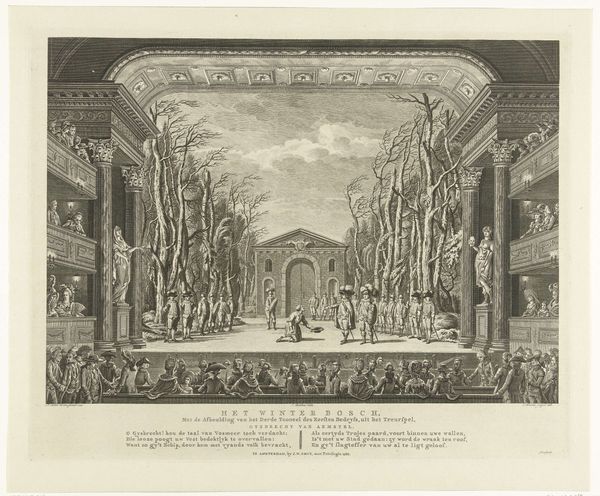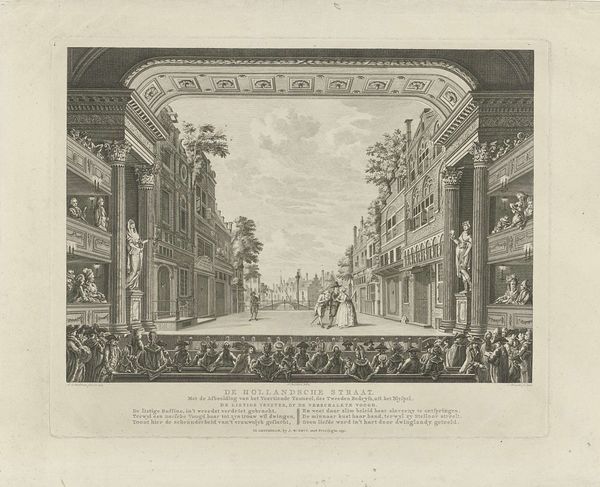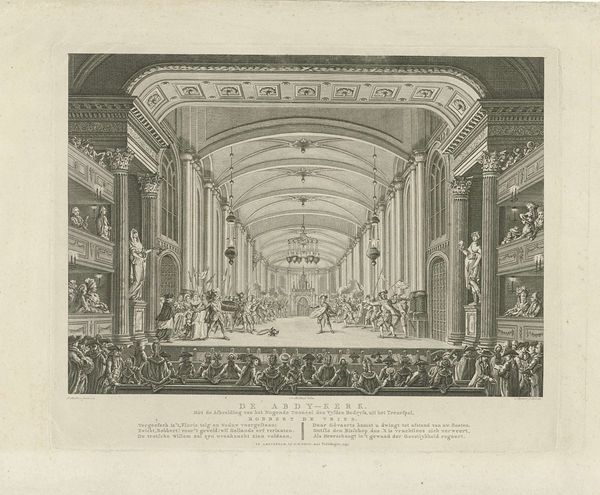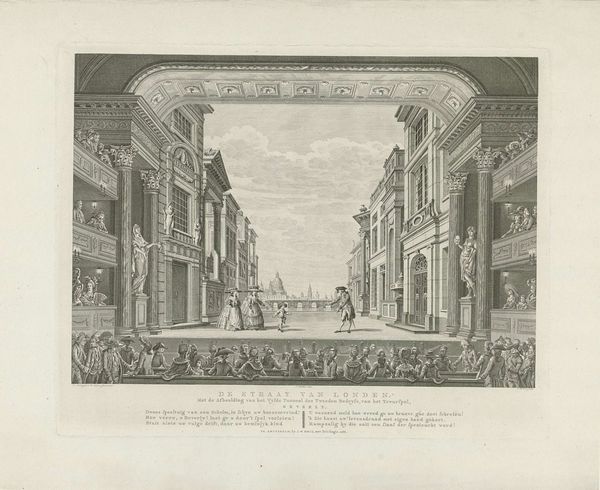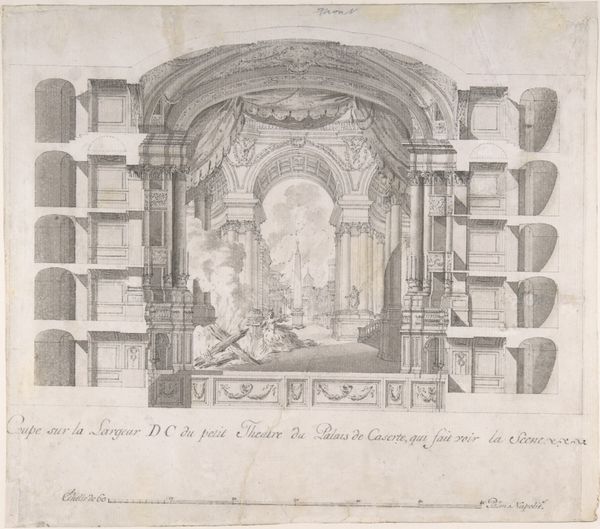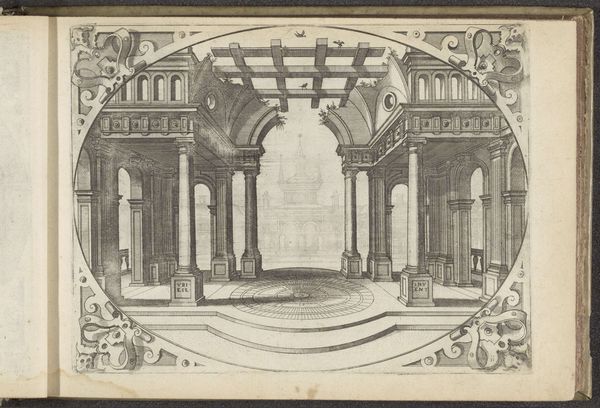
Dimensions: height 146 mm, width 267 mm, height 305 mm, width 452 mm, height 43 mm, width 328 mm
Copyright: Rijks Museum: Open Domain
Editor: This is "Schouwburg met toneeldecor: De Nieuwe Tuin," or "Theater with a Stage Set: The New Garden" by Jan Punt, dating back to between 1760 and 1765. It's an engraving. I'm immediately struck by how artificial yet elegant it feels. The play within the print... what do you see in this piece? Curator: The print, as you observed, presents us with a staged artifice. But it’s more than just a theatrical set; it's a reflection of cultural aspirations and the era's fascination with constructed realities. Notice the figures positioned within the garden setting. Do they evoke for you a particular mood or ideal? Editor: They seem to embody an ideal of refined leisure, but there's something almost...unreal about them, like figurines placed carefully on a cake. They feel a little trapped, maybe. Curator: Exactly. The 'garden' becomes a stage for social performance. The symbols are quite loaded. The architecture, the statuary, the very arrangement of space speak to a desire for control and order. This need for order, isn't this a recognizable human yearning across eras? Editor: It is, but seeing it so overtly staged makes me question what is being controlled and why. Curator: A crucial question! What's being controlled, visually, is the representation of social harmony, but at what cost to authenticity? The imagery of classical forms signals cultural continuity and an idealized past but filtered through a Baroque sensibility, it expresses psychological dimensions, like escapism or longing. Editor: So the image isn't just a pretty picture; it's a window into the cultural psyche of the time. I hadn't considered the psychological aspects so directly. Curator: Indeed. It reminds us that visual symbols are not neutral; they carry a psychological, social, and historical burden. This really gave me food for thought.
Comments
No comments
Be the first to comment and join the conversation on the ultimate creative platform.
